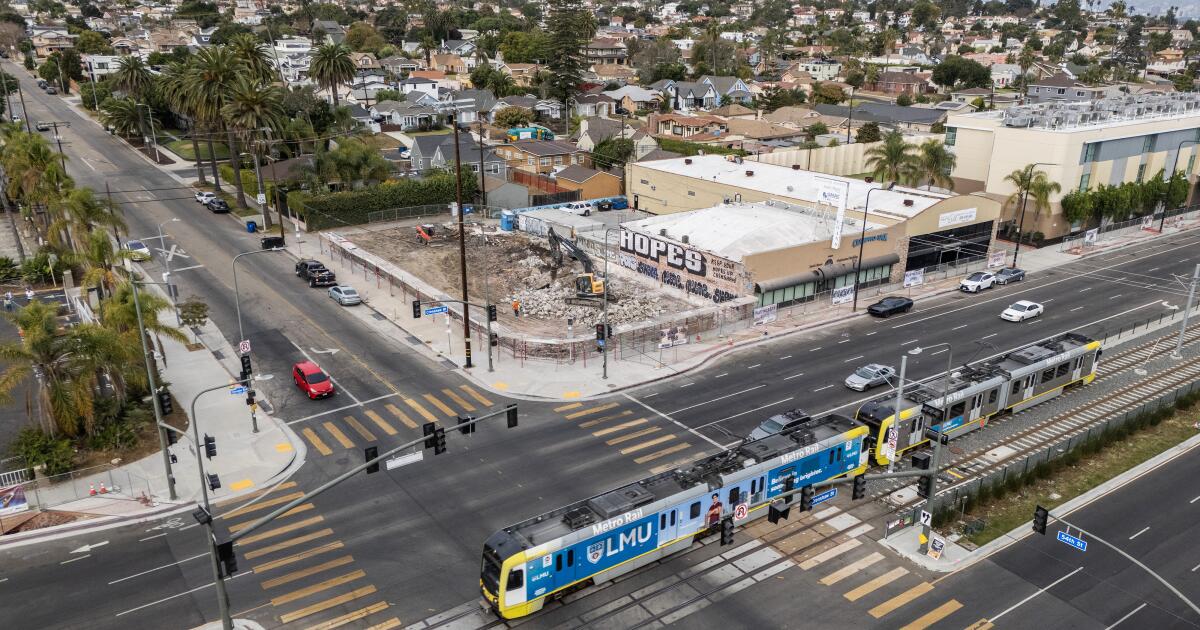California legislators strike last-minute deal to help oil industry but limit offshore drilling
SACRAMENTO — Amid concerns that refinery closures could send gas prices soaring, California legislative leaders Wednesday introduced a last-minute deal aimed at increasing oil production to shore up the struggling fossil-fuel industry while further restricting offshore drilling.
The compromise, brokered by Gov. Gavin Newsom, Assembly Speaker Robert Rivas and Senate Pro Tem Mike McGuire, would streamline environmental approvals for new wells in oil-rich Kern County and increase oil production. The bill also would make offshore drilling more difficult by tightening the safety and regulatory requirements for pipelines.
With support from Rivas and McGuire, Senate Bill 237 is expected to pass as part of a flurry of last-minute activity during the Legislature’s final week. Newsom’s office said the governor “looks forward to signing it when it reaches his desk.”
The late introduction of the measure may force the Legislature to extend its 2025 session, set to end Friday, by another day because bills must be in print for 72 hours before they can be voted on.
The bill was introduced Wednesday as part of a package of energy policies that aims to address growing concerns about affordability and the closure of California oil refineries.
Valero and Phillips 66 plan to close plants in the San Francisco Bay Area and Los Angeles County’s South Bay, which would reduce California’s in-state oil refining capacity by an estimated 20%. Industry experts warn that losing refining capacity could lead to more volatile gas prices.
The closures have become a sore spot for Newsom and for state Democrats, pitting their longtime clean-energy goals against concerns about the rising cost of living — a major political liability.
The package tries to strike a balance between the oil industry and climate activists, but neither side seemed particularly pleased: Environmental groups panned the agreements, and industry groups said they were still reviewing the bill.
“I don’t think what’s in that legislation is going to keep refineries open,” said Michael Wara, the director of Stanford University’s Climate and Energy Policy Program.
Crude oil produced in California makes up a fraction of what refineries turn into gasoline, he said, so although increasing production may help stabilize the decline of local oil companies, it won’t benefit the refineries.
The bill would grant statutory approval for up to 2,000 new wells per year in the oil fields of Kern County, the heart of California oil country, which produce about three-fourths of the state’s crude oil. That legislative fix, effective through 2036, would in effect circumvent years of legal challenges by environmental groups seeking to stymie drilling.
The state, which has championed and pioneered progressive environmental policies to slash carbon emissions, also is home to a billion-dollar oil industry that helps power its economy and has significant political sway in Sacramento. Despite steady declines in production, California remains the eighth-largest crude oil producing state in the nation, according to the U.S. Energy Information Administration.
Hollin Kretzmann, an attorney at the Center for Biological Diversity’s Climate Law Institute, said the legislation “acknowledges the harms of oil drilling yet takes radical steps to boost it.”
“Removing environmental safeguards won’t reverse the terminal decline of California oil production but it will allow the industry to do more damage on its way out the door,” Kretzmann said, adding that it will have “no impact on refinery closures or gas prices.”
Ted Cordova, a vice president of E&B Natural Resources, an oil and natural gas company with operations in Kern County, told reporters earlier this week that California needs to reverse falling oil production to keep refineries operating. He said his firm gets emails from pipeline companies saying they are operating “at dangerously low levels, can you send us more?”
The bill also has the potential to create new hurdles for Sable Offshore Corp., the Texas oil firm that is moving toward restarting offshore drilling along Santa Barbara County’s coast, depending on when the company navigates through a litany of ongoing litigation and necessary state approvals.
The company has moved forward on repairs to the network of oil pipelines that burst in 2015 in one of the state’s worst oil spills, despite opposition from the California Coastal Commission.
The bill, which would take effect in January, reasserts the authority of the commission to oversee pipeline repair projects and requires the “best available technology” for any pipe transporting petroleum from offshore. That could add lengthy governmental reviews for Sable if the operation isn’t running by January.
The company, despite reports that it’s running low on capital and has suffered repeated setbacks, continues to say it hopes to begin sales as soon as possible.
Representatives from Sable did not respond to questions Wednesday.
Mary Nichols, an attorney at UCLA Law’s Emmett Institute on Climate Change and the Environment, said the bill probably wouldn’t affect the ongoing project off Santa Barbara County’s coast — which remains tied up in litigation — but makes clear that there’s no easy path for any other company looking to take advantage of offshore oil in federal waters under the oil-friendly Trump administration.
“This was designed to send a message to anybody else who might be thinking about doing the same thing,” said Nichols, a former chair of the California Air Resources Board.
Lawmakers also introduced a tentative deal on cap-and-trade, an ambitious climate program that has raised roughly $31 billion since its inception 11 years ago. The revised language would extend the program from its current 2030 deadline until 2045.
The program, last renewed in 2017, requires major polluters such as power plants and oil refineries to purchase credits for each ton of carbon dioxide they emit, and allows those companies buy or sell their unused credits at quarterly auctions.
Assemblymember Lori D. Wilson (D-Suisun City), one of the authors of SB 237, said she was glad to make progress on the push and pull between the state’s fuel needs and its commitment to green energy. She said she understands there are environmental concerns, but “at the end of the day, our purpose was an issue of petroleum supply.”
“We all don’t want an import model,” she said.
Times staff writers Melody Gutierrez and Hayley Smith contributed to this report.



